Samantha Fish is moving in new circles these days—circles occupied by the kind of people you see a lot on classic-rock radio playlists. First there was the invitation from Eric Clapton to play at his 2023 Crossroads Guitar Festival in L.A. Then there was the summer ’24 slot on Slash’s S.E.R.P.E.N.T. tour, followed by the Experience Hendrix tour, on which she dug into Jimi classics in the company of Eric Johnson, Dweezil Zappa, and other luminaries. And, oh yeah, she opened for the Stones in Ridgedale, Missouri, on the final date of their Hackney Diamonds jaunt. That’s right, the Rolling Stones.
If you’re already a fan of Fish’s tough Delta-mama singing and high-temperature guitar work, you’ll probably think that all this is just as it should be. You gotta reap what you sow eventually, right? And Fish has been sowing for a long time, from her bar-band days in Kansas City 15 years ago through eight rootsy, eclectic albums as a leader (not counting the two early-2010s discs she cut with Dani Wilde and Victoria Smith as Girls with Guitars, or her 2013 outing with Jimmy Hall and Reese Wynans in the Healers, or 2023’s tangy swamp-rock collaboration with Jesse Dayton, Death Wish Blues) to her current tour schedule of about 150 dates per year in North America, the U.K., Europe, and Australia.
Still, even with such a solid career foundation to draw on, mixing and mingling in the flesh with folks you’ve known all your life as names on record covers could be a little intimidating. Is it? “You know, I don’t ever think about it in those terms,” Fish says on the phone from her home in New Orleans. “So when you lay it all out there like that, it feels like, ‘Aw shit, that’s crazy.’ I mean, it is crazy. When I think about the goals that I’ve made over the years … honestly, I’ve crossed off a bunch of things that I thought were even ironic being on the list, because they just seemed so far-fetched. Every interview I’ve ever done, they were like, ‘If you could ever open up for somebody, who would it be?’ And I always said the Stones, ironically. Cause when the hell’s that gonna happen? I’m a guitar player from Kansas. That’s nuts.”
With her Stogie Box Blues 4-string, heavy hitting style, and wide array of blues and rock influences, Fish is an artist of a different stripe.
Photo by Jim Summaria
Fish spits out the sentences above in a fast, excited spray, one word tumbling over another. Then she pauses for a second, and it’s clear that wheels are turning in her head. Her voice gets more playful. “I’m gonna start speaking some even wilder things into existence just to see what happens,” she cracks, her grin nearly audible over the line. “A billion dollars! No, money’s evil, but you know what I mean.”
“I wanted to lean into superpowers.”
Given her formidable chops, it’s not that daring a leap to suggest that Fish could be capable of playing some wilder things into existence, too. She’s certainly off to a good start with the just-released Paper Doll, her ninth solo album overall and third for Rounder Records. Whether your personal taste leans more toward nasty string-snapping riffs (the aptly titled “Can Ya Handle the Heat?”), sizzling slide escapades (“Lose You”), or high lonesome twang (“Off in the Blue”), you can’t deny that the album’s loaded with prime guitar moments. And its two longest tracks, “Sweet Southern Sounds” and “Fortune Teller”—“longest” being a purely relative term (they’re both under six minutes)—offer listeners just a taste of the neo-psychedelic fantasias that can occur when Fish stretches out in concert.
“People always come up to me and say, ‘You’ve got to figure out a way to capture the live feeling on a record,’” she reports. “Sometimes you go into the studio and it’s like, ‘Shit, I gotta make the song work for vinyl, so let’s cut it down,’ and you end up hacksawing away some of these parts that are kind of the feeling and heartbeat of the song. This time we set out to make something that felt live.”
Fish made her recording debut in 2009 as the leader of the Samantha Fish Blues Band, with the punny-titled in-concert indie album Live Bait.
Photo by Curtis Knapp
That’s one way in which Paper Doll differs dramatically from its predecessor, 2021’s Faster, which delved into a poppier territory of synths, beats, and high-tech production (and, in this writer’s opinion, did so with great effectiveness; one of Faster’s highlights, “Hypnotic,” sounds like it could have been recorded at a late-night dance club hang with Prince and the Pointer Sisters). In contrast, obviously electronic sounds are nowhere to be heard on the new disc, and the music referenced stays firmly in the American roots category: soul, rock, country, juke-joint blues. For some artists, a stylistic shift like this could be seen as a retrenchment, but for Fish, it’s the result of a major departure. This is the first time she’s ever used her road band—keyboardist Mickey Finn, bassist Ron Johnson, and drummer Jamie Douglass—to make a studio album.
“Everybody’s scratching their heads about what genre this falls into, but I know where every song started—with a blues riff.”
“Usually,” Fish explains, “I’ve worked in studio situations where there’s been a producer and they want to put the people they know together. So it was cool to bring in the band that I’ve been playing with for the last couple of years instead of session musicians. I feel like the dynamic was different—the familiarity, and just kind of knowing where the others were gonna go. It might be a minute difference to a listener, but for the players in the room, it helped breed another sensibility.”
Also helping in that department was producer Bobby Harlow, late of Detroit garage-rock revivalists the Go. Paper Doll is the second Fish album that Harlow’s produced; the first was 2017’s Chills & Fever. But whereas that album was all covers, the focus this time was on original songs, more than half of them co-written by Harlow with Fish before he was even considered to produce the album.
“Last March, Bobby came out to a show we did in Detroit,” Fish recalls. “We went out to lunch, and because I was working on writing songs, I asked him to do some co-writing with me, because I love the songs he wrote for the Go. He’s really fun to be in a room with when you’re making something, because he’s incredibly devoted to it. So we started writing, and then a few months later the label was like, ‘We gotta make this album, who’s gonna produce it?’ Well, we’re on the road all summer, so I don’t know when y’all expect us to do this record. But Bobby was available, and it was like the universe bringing us back together. He was passionate about the kind of songs I was writing, and he understood where I wanted to go with it.”
Samantha Fish's Gear
Before finding her SG, Fish’s main guitar was her Delaney signature model thinline style, with a fish-shaped f-hole.
Photo by Frank White
Guitars
- Alpine white Gibson SG
- Gibson Custom Shop ES-335
- Delaney 512
- Stogie Box Blues 4-string
- Danelectro baritone
Amps
- Category 5 Andrew 2x12
- Fender Hot Rod DeVille
Effects
- Dunlop volume pedal
- Analog Man King of Tone
- JHS Mini Foot Fuzz
- Electro-Harmonix Micro POG
- MXR Carbon Copy
- Boss PS-5 Super Shifter
- Voodoo Lab Pedal Power ISO-5
Strings, Picks, & Slides
- Ernie Ball Regular Slinkys (.010-.046)
- 1.0 mm picks (any brand)
- Various brass and ceramic slides
And where was that? “I wanted to lean into superpowers,” Fish quickly answers. “What are my strengths, what are the things that people know me for and recognize me for, and what can I amplify to make this a real statement record? It’s funny, because everybody’s scratching their heads about what genre this falls into, but I know where every song started—with a blues riff.”
Born out of the blues it may have been, but when the Paper Doll material reached the studio (actually, two studios: the Orb in Austin and Savannah Studios in L.A.), it went through some changes, partly due to the band’s contributions, partly due to Harlow’s conceptual leaps. “Bobby’s like a musicologist,” Fish says approvingly. “He’s deep. He pulls from so many different spaces, and he’s definitely introduced me to some things that I wasn’t hip to over the years. That’s done a lot to shape my musical tastes.” If you’ve had the significant pleasure of attending one of the many gigs in which Fish breaks out proto-punk nuggets like the MC5’s “Kick Out the Jams” and Love’s “7 and 7 Is,” well, now you know the guy to thank.
“This time we set out to make something that felt live.”
Perhaps not surprisingly, one of Paper Doll’s best tracks, “Rusty Tazor,” is a similar romp through the garage. In a rare case (for this album) of the producer bringing in someone he knows, Harlow tapped Mick Collins of cult faves the Gories and the Dirtbombs for backing vocals. “He adds such a personality to that song,” Fish says. “And I’m a punk rock fan. I love that whole era. I just love this raw, uninhibited way of playing. There’s nothing precious about it. Leaning into the edges—that’s where the real shit lies.”
Because the Paper Doll sessions took place in between periods of touring, Fish only brought her road instruments, including a new white Gibson SG and Stogie Box Blues 4-string cigar box guitar (see sidebar for more on her personal collection). But both the Austin and L.A. studios presented plenty of other options. “A ton of guitars,” Fish remembers with a laugh, “in varying degrees of disrepair. I used a rather unruly [Gibson ES-] 335 in Savannah for ‘Sweet Southern Sounds.’ You know how some guitars fight you when you play them? Well, I like a little bit of fight, but not so much that I’m pulling the strings out of the saddle, and it was fighting me like that. It was hard to push the strings down, I could only bend in certain places. But that just made the performance more intense, and it sounded good. There was also a Tele and a Strat that they had at the Orb. We had so many tools at our disposal, it was like, ‘Let’s go nuts and play with everything we can.’”That choice of m.o. also sounds like a positive way to respond to a career moment that Fish calls “an incredible ride. Especially in the last year-and-a-half, two years, it’s just upped the ante even more. There’s nothing more to do, really. I went out, I played to the best of my ability and I did the thing that I’ve been working hard to do for the last 15 years or so. And it’s awesome to be able to show up in that capacity and perform alongside people that I’ve really looked up to. I just feel grateful. I know I’m lucky.”
Fish’s Favorites
Fish has a brawling style of playing slide, often on her cigar box. “Lose You,” on her new album, is especially representative of her approach to the classic blues technique.
Photo by Jim Summaria
For nearly a decade, Samantha Fish’s primary stage axe has been a 2015 alpine white Gibson SG that she bought new online. She’s still got it, but last year it ran into some trouble. “I ended up having to reglue the neck over the summer,” she says, “and it’s been having tuning issues. So Gibson sent me another white SG that’s just beautiful, in great shape. The neck’s a bit fatter, which is cool, different from mine. I’ve been using that one a lot”—indeed, the new SG is all over Paper Doll. “I’ve hung onto it, and I feel bad about that. I don’t want to be the person who borrows a guitar and keeps it. But it just played so great, and it was like, ‘I need this thing. What can I do to keep it?’ Luckily, the people at Gibson have been so good to me over the years.”
An even more recent addition to Fish’s electric arsenal is a Custom Shop Gibson ES-335 in silver sparkle finish, purchased in the fall at Eddie’s Guitars in St. Louis. “Because I played a 335 on ‘Sweet Southern Sounds’ in the studio, I was like, ‘Well, I’m gonna need one live, so of course I have to get this one!’ I’ve always wanted a silver sparkle, and this one is pristine. I’m so scared of the first scratch I get on it, or buckle rash. I’m probably gonna cry!”
Fish hasn’t been playing her Delaney SF1 Tele-style “Fish-o-caster” so much recently, but another Delaney model, the hollowbody 512, is still getting lots of action (often tuned to open D for slide use), as is her Stogie Box Blues 4-string, equipped with a P-Bass pickup. Her Danelectro baritone, Bohemian oil-can guitar, and clutch of Fender Jaguars are also safe at home, along with her current acoustic main squeeze, a new Martin D-45.
YouTube It
Samantha plays Jimi in this September 2024 performance from the most recent Experience Hendrix tour. The selection: “Fire.”




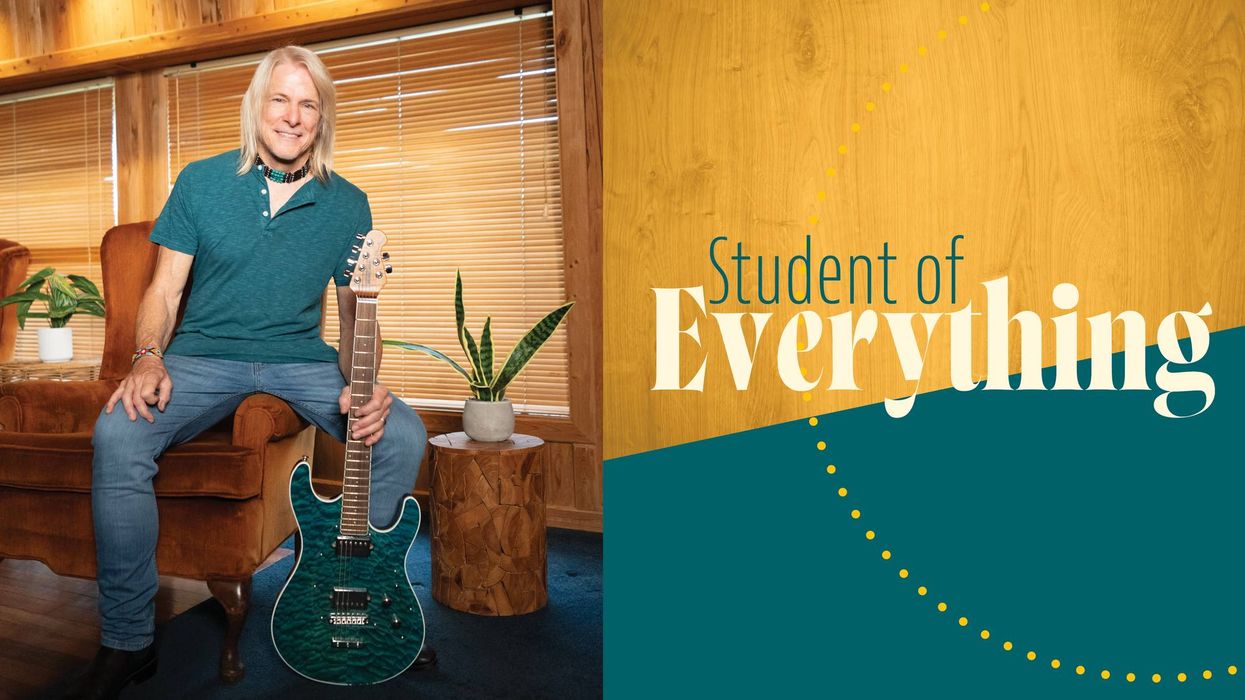
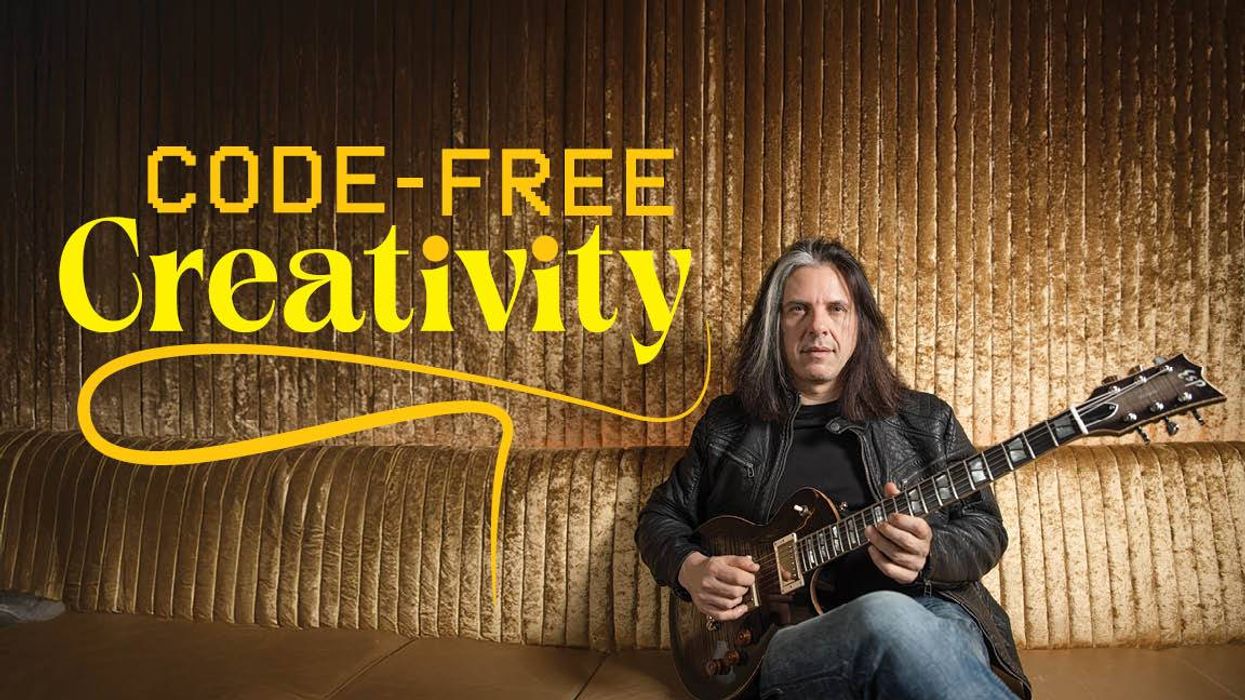








![Rig Rundown: Russian Circles’ Mike Sullivan [2025]](https://www.premierguitar.com/media-library/youtube.jpg?id=62303631&width=1245&height=700&quality=70&coordinates=0%2C0%2C0%2C0)







